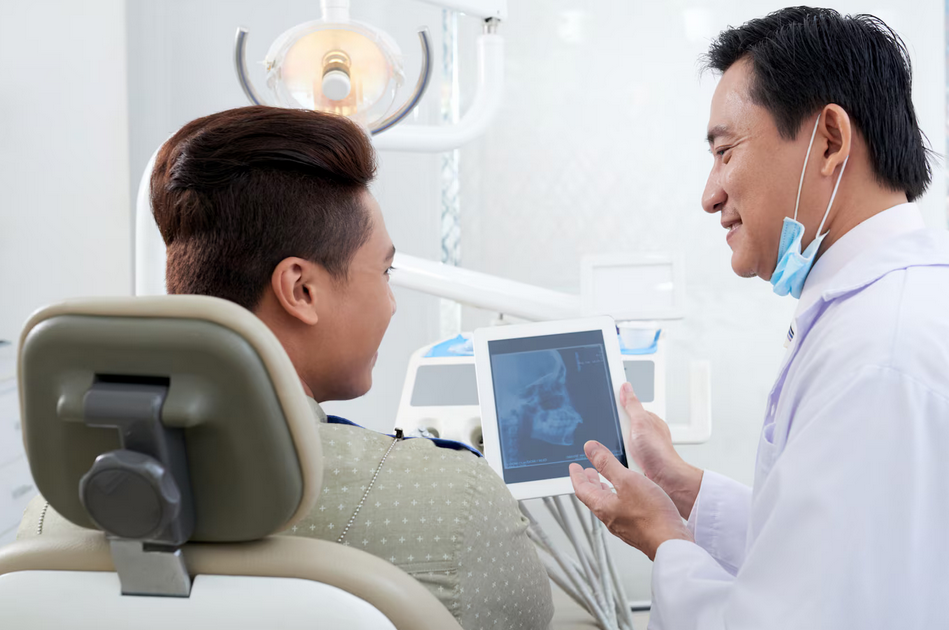Getting porcelain veneers in Korea is a popular choice for medical tourists seeking high-quality cosmetic dentistry at affordable prices. Known for cutting-edge dental technology and skilled cosmetic dentists, Korea provides fast and effective veneer treatment—but what about recovery?
Whether you’re visiting Seoul, Busan, or another major Korean city, understanding what happens after the procedure is crucial for a smooth experience. Here’s what medical tourists should know about post-veneer recovery and how to make the most of their trip during this time.
🦷 What to Expect Immediately After Veneer Placement
Most porcelain veneer procedures are minimally invasive and involve little to no downtime. However, you may experience some mild and temporary side effects such as:
- Tooth Sensitivity: Hot or cold foods might cause mild discomfort for a few days.
- Gum Tenderness: Gums may be slightly irritated where the veneer edges meet the gum line.
- Tight or Unfamiliar Bite: You may feel that your teeth “don’t quite fit” at first—this usually resolves in a few days.
These symptoms are normal and should gradually improve within 1 to 2 weeks. Your dentist will give you personalized care instructions based on your treatment.
💡 Top Recovery Tips for Medical Tourists in Korea
1. Take It Easy for the First 24–48 Hours
Even though veneer treatment is not a surgical procedure, your mouth needs time to adjust. For the first couple of days:
- Avoid hard, crunchy, or very hot/cold foods.
- Stick to soft foods (rice, soups, eggs, noodles, smoothies).
- Don’t clench or grind your teeth.
- Avoid alcohol and smoking if possible.
2. Use a Soft Toothbrush and Gentle Toothpaste
Switch to a soft-bristled toothbrush and non-abrasive toothpaste to avoid scratching the veneers or irritating the gums. Korean clinics may provide or recommend dental care products specifically for patients with cosmetic work.
3. Avoid Staining Foods and Beverages
For at least a week post-procedure, limit or avoid:
- Coffee, tea, and red wine
- Soy sauce and curry
- Smoking or tobacco products
While porcelain resists stains better than natural teeth, newly placed veneers need time to fully bond, and it’s best to avoid anything that could dull their color early on.
🧳 Can You Sightsee or Travel During Recovery?
Absolutely! One of the benefits of porcelain veneers is minimal downtime, making them ideal for tourists who don’t want to lose vacation time.
✅ You can explore Korea’s famous landmarks, shop, and enjoy the local cuisine (as long as you avoid hard or staining foods).
✅ Many patients schedule their veneer appointments early in the trip, leaving time for recovery and follow-up visits.
Tip: Choose centrally located dental clinics near tourist areas like Gangnam (Seoul), Haeundae (Busan), or Myeongdong so you can combine treatment with sightseeing.
📞 Schedule a Follow-Up Before Leaving Korea
Most reputable Korean dental clinics will want to check your veneers before you leave the country. Your follow-up visit may involve:
- Checking the fit and comfort of the veneers
- Minor bite adjustments
- Polishing and final photo documentation
- Aftercare instructions for long-term maintenance
Make sure your travel plans allow for at least 1–2 days after the procedure before flying home in case any adjustments are needed.
✈️ Post-Treatment Travel Considerations
- No flying restrictions: You can safely travel by air after veneer treatment.
- Comfort kits: Some clinics offer travel-sized dental care kits with a toothbrush, whitening-safe toothpaste, and floss for convenience.
- Virtual support: Choose a clinic that offers online follow-up in case you have concerns after returning home.
🦷 How to Maintain Veneers After Recovery
Even though veneers are durable and stain-resistant, long-term care is essential. Korean dentists recommend:
- Brushing twice daily with a soft brush
- Flossing once a day
- Wearing a night guard if you grind your teeth
- Visiting a dentist for professional cleaning every 6 months
If you’re planning future travel to Korea, you can even coordinate professional cleanings or touch-ups with another trip!
Final Thoughts
Porcelain veneers offer medical tourists a quick, effective way to transform their smiles with minimal recovery time. By following post-treatment tips and choosing a reliable Korean dental clinic, you can enjoy your new smile and your Korean adventure—all in one trip.




